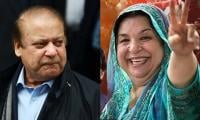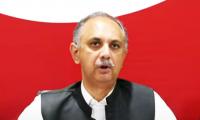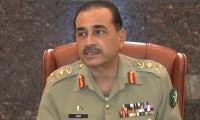There has been a considerable debate on currency management for a while. The pendulum of currency swung between defending currency to supposedly market based exchange rate in the recent times. The side-effects of both extremes are much clearer in hindsight and this may perhaps be a good time to look at their pros and cons objectively.
The best analogy for monetary tools, particularly exchange parity, to be used for correcting the external account imbalances is that of the pugio - a dragger of the sorts used by Roman soldiers as a sidearm. It seems likely that the pugio was intended as an “auxiliary weapon”, but it’s exact purpose to the soldier remain unknown. Whether it falls in the family of a sword or a dragger is yet to be concluded; it could be used either way depending upon the situation and it could, of course, back-fire, if incorrectly drawn on.
One thing is becoming apparent about exchange rate management that “actions taken in isolation” at either end of the stick may perhaps be more harmful than help, in the medium to long run, as our challenges in current account are more structural in nature, than merely monetary policy, particularly currency, driven. While current account deficit was cut by ~US$6bn between 2018 and 2019 when there was massive devaluation; however, it’s yet to be concluded on how much is the contribution of devaluation therein - exports remained virtually flat while single largest fall in imports was in machinery in which major contribution may perhaps came from the slow-down in CPEC. Same is the phenomenon in the last six months (July-December 2019) where the current account deficit dropped down commendably from US$4.3bn (in same period last year) to US$0.7bn, but the exports remained struggling with merely a growth of ~4% or US$529mn (with 75% of this growth came from rice and vegetables); however, on the other hand imports tumbled by ~US$6bn mainly on account of ~US$3bn oil imports (basically, price driven which reduced by almost 11.5%), ~US$1bn in vehicles/ kits (fiscal measures propelled perhaps), ~US$0.8bn machinery which means compromising on sustainable GDP growth numbers for the future. This is very visible from the graph here that while there maybe a correlation between the currency movement and the trade numbers; however, the relationship between them is weak, as was concluded earlier in the same space.
It appears that the devaluation doesn’t feature in as a prominent factor in achieving reduction in current account deficit or it was perhaps not necessary to devalue the currency that much to achieve the desired objectives on current account front, as it had more negative corollary, including fueling extensive inflation and economic growth compromises, while bearing very limited benefits and that also for short-term, if all other reforms are not pursued in tandem.
Structural reforms, therefore, remain center of the plate in addressing primary or secondary deficits - the twin deficits. Devaluation, or for that matter defending currency, are adhoc measures at best, which could provide a temporary respite and there would be no escaping from painful structural reforms (including import substitution, value addition and widening of products in exports, etc.) which will only start showing the benefits from medium to long term. In the meantime, until the aggressive structural measures are embedded, the choice has to be made on how to manage the currency. While the jury is out on this; however, it could be argued, looking at the way things have emerged over the past few years, that defending currency may be a better option, than devaluation or market based exchange rate, as a stand-alone monetary tool, contrary to the general text book belief, with budget deficit to be funded from FX debt in the interim. The myth that “debt is bad” is not true after all, if it’s deployed for the right purpose.
With recent developments, this has surely driven home that currency movement impacts the lives of masses as much, if not more, as any other element like prices of power, commodities, utilities, etc., as currency remains a major factor in influencing inflation. Governments all over the globe provide subsidies to various essential items which impact lives of masses on a daily basis even in the developed world. Therefore, in order to appreciate the exchange parity levels, we need to consider currency as yet “another commodity” like electricity, fertilizer, wheat, etc., which impacts the livelihood of masses, given that almost 3/4th of our imports are essential or semi-essential in nature, and most contentious point here is that defending currency shall be treated as subsidy like any other commodity. However, this is important to contextualize qualitative and quantitative impacts of this subsidy, ie., cost of defending currency.
In orders to assess the impact of defending currency, certain assumptions have been employed herein. The context of defending currency shall be well understood and appreciated. The financial cost of it shall also be realistic and not based on unrealistic assumptions or hear-say or half-baked information. The key and the core assumption is that in an ideal situation, the currency level shall be maintained as such that the current account becomes balanced, which means that devaluation would boost exports and discourage imports at the same time; thus, result in gradual reduction in current account deficit (or even better in our context surplus in transition) and eventually lead to a balanced current account. While I believe that surplus is better until the entire foreign currency debt of the country is paid down but some economists argue that current account surplus means excessive capital generation which maybe an inefficient external account management. Therefore, it’s safe to assume, for the purposes of this write-up, that balanced current account is the perfect situation for the time being and the FX debt is reduced gradually over a period of time with “real” stability and sustainable surplus like situation in external account and not through “temporary” stability at the back of currency devaluation. In the interim, budget deficit is the amount that would be funded through FX debt and the cost of debt, in turn, will be the cost of defending currency. To calculate the cost of debt, rate of 7.5% p.a. has been assumed based on the estimated cost of raising debt through Eurobonds/ Sukuk. Since the concept of defending currency institutionalized since 2013 onwards; therefore, the timeline of data taken into account is from 2013 in this article.
The outcome of this exercise is very revealing. It appears that between fiscal years 2013 and 2019, the total cost of defending the currency was ~US$4.5bn whilst the accumulated fiscal subsidies to power sector, food & commodities, fertilizer, etc., and cash support to State Owned Entities (“SOEs”) was ~US$48bn. The cost of BISP, or Ehsas Program, on top of that, in the same period, has also been in the vicinity of US$6bn. The purpose of all these forms of subsidies is to maintain stability in prices and keep inflation under check or improve affordability of essentials for common person. The most disappointing element is the US$30bn subsidies and cash support to SOEs which is a total waste of money as this cash support could be saved with better corporate governance and eliminating political influence in these organizations as were achieved in the case of banking reforms in late 1990s and early 2000s.
The most interesting aspect is that if these cash supports/ subsidies are saved then the need to defend currency will also subside as all these are intertwined one way or the other. However, given the choice, decision is very simple - save these leakages and use these resources instead to defend currency as fixing these issues, with better governance or privatization, is easier than trying and managing temporary respite through devaluing currency. Therefore, in pure monetary terms, it’s very clear that subsidizing or in other words cost of defending currency is much lower than direct subsidies that the Government extends to achieve price stability for the masses.
Another very interesting aspect is that while current account deficit has been cut down substantially in absolute terms; however, in percentage of GDP terms, successes are not as pronounced and in fact the cost of defending currency is even lesser in relative terms. This obviously is due to the lower denominator - GDP - which has tanked since the currency had been made market based. Tried and tested, proven formula across the globe for bringing people out of poverty is the growth in GDP which is substantially compromised when the currency is not defended. Therefore, making currency market based is double whammy as it not only stoke inflation but also adversely impact GDP growth which means less job creation and affordability of utilities and basic necessities for the peoples. Pakistanis seem to be suffering from this double trouble at this stage and this must be corrected in the best interest of the peoples.
Devaluation also directly results in contributing to the fiscal deficit as the cost of debt servicing on FX debt increases which results in higher borrowing in PKR to cough-up more foreign currency as Pakistan is in a debt trap. This also causes cost-push inflation as deficit financing is the sore cause of creating inflation in any economy. This tantamount to effectively printing currency and results in higher currency in circulation which has increased over three folds and growing in the last few years. Thus, fueling inflation and hurting common people on this count too, other than making essential and semi-essential items expense due to devaluation. This is the second argument why the currency need to be defended until we’re carrying FX debt as a country.
The Real Effective Exchange Rate (“REER”) index (the optimal level of currency vis-a-vis competition) is also available since 2013. What we have done is that we have calculated the optimal exchange rate based on the REER index and then compared it with the interbank rates to assess the over or under valuation of the currency in the table below.
We have also compared currency points with the level of reserves in each year under assessment. The results are very interesting here as well. It seems that reserve levels are highest when the currency was defended. There’s a popular view that these reserves are built based on incremental FX debt. We have looked at this aspect too and would like to refer to the graph below. It’s very clear that there has been very good debt management on the external front. Except for 2016, when foreign currency borrowing outpaced the current account deficit.
However, when looked at the full timeline under discussion, it seems that FX debt has been well managed as there has been an accumulated incremental FX debt of ~US$41bn verses total current account deficit of ~US$60bn - a favorable delta of ~US$19bn - and the only plausible explanation for funding this delta is through professional markets by SBP which also generally believed as cost of defending currency which is not correct. This can also be said here that the correlation of both currency and reserves appear to be weak. This also defeats the fashionable notion that the reserves were built through debt accumulation only when the currency is defended. In fact, it’s totally in contrast to this notion whereby the deficit was funded through other sources than FX debt. Arguably, this also causes inflation as the Government or the Central Bank has to acquire foreign currency from the open market at expensive rate but this cost is still worthwhile than the cost of devaluation as we have seen above.
In conclusion, there shall not be any argument that the ideal situation is to have the market based exchange rate. The question is when and how? This write-up argues that it shall not be done in “isolation” - ie., the aggressive structural reforms has to be done in tandem with currency management which has to be done gradually with adequate intervals, if it has to be devalued at all, to avoid disruption in the market and ensuring that these measures are well absorbed by the market and keeping the prices/ inflation undercontrol for general masses. The other argument here is perhaps that until the benefits of reforms are well embedded, it maybe a good idea to defend the currency as much a possible and this write-up argues that it’s surely worth while to defend the currency within reasonable limits. Devaluation in isolation, and independently, provides temporary stability only. The situation goes back to square-one in due course, if the necessary institutional initiatives are not done simultaneously, and the losses it causes in the market, in the meantime, becomes unrecoverable perhaps. Therefore, the focus shall be on reducing fiscal deficit caused by cash support to SOEs and subsidies to the inefficient sectors like power (leakages to be plugged) with better corporate governance and aggressive institutional reforms, rising over and above politics and political considerations. Rest of the aspects will fall in-place by default, including external account challenges to a very large extent, and then the monetary policy (both interest rates and currency management) will become more effective and useful.
In this image, people enjoy the view at a tourist destination. — APP/FilePESHAWAR: Thousands of tourists suffered in...
An eye-catching view of blooming flowers at Company Bagh Park ahead of Eid Mela, the image was released on April 10,...
Commuters face difficulties in transportation due to stagnant rainwater in Peshawar on April 15, 2024. —...
Pakistan Muslim League-Nawaz leader Captain Mohammad Safdar addresses a gathering of party supporters in Mansehra on...
A representational image of a police tape. — AFP/FileGHALLANAI: A fourteen-year-old boy was killed in a blast in Dab...
A representational image of a person shooting. — Pexels/FileMINGORA: A man shot dead his wife along with her alleged...







